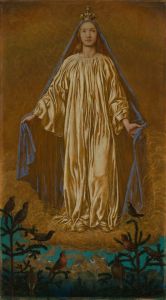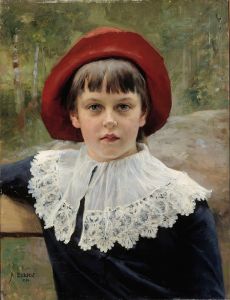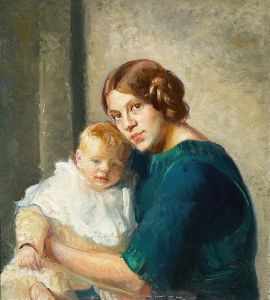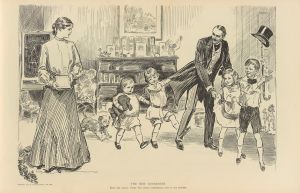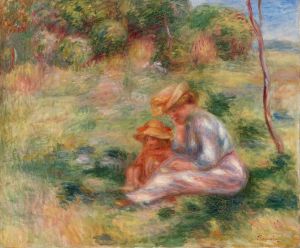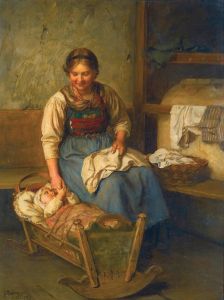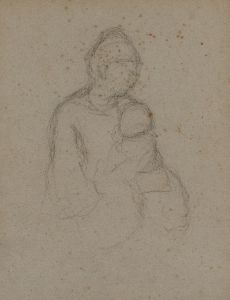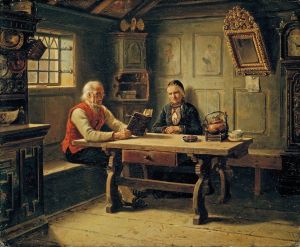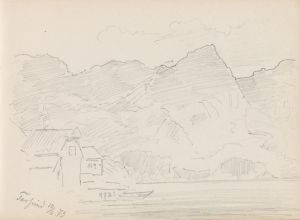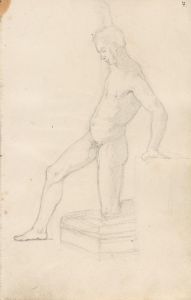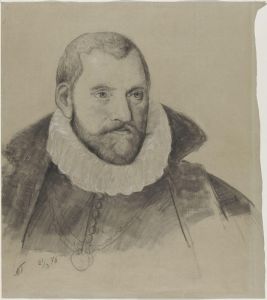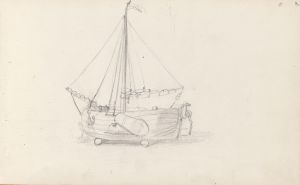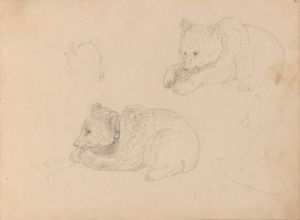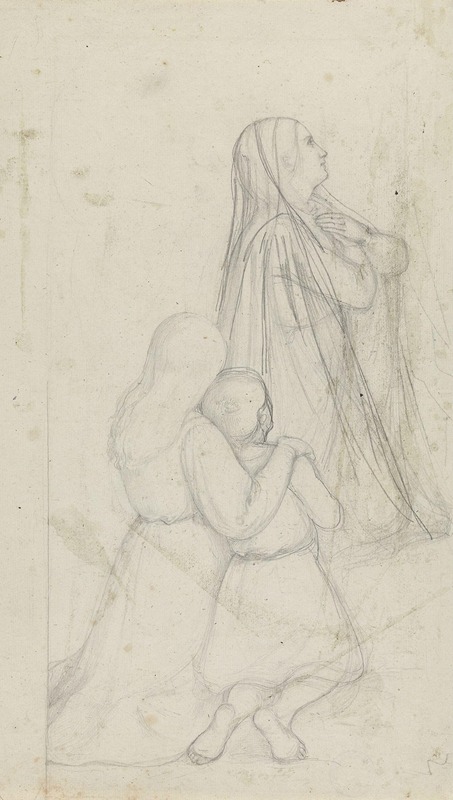
Knelende kvinne og barn
A hand-painted replica of Adolph Tidemand’s masterpiece Knelende kvinne og barn, meticulously crafted by professional artists to capture the true essence of the original. Each piece is created with museum-quality canvas and rare mineral pigments, carefully painted by experienced artists with delicate brushstrokes and rich, layered colors to perfectly recreate the texture of the original artwork. Unlike machine-printed reproductions, this hand-painted version brings the painting to life, infused with the artist’s emotions and skill in every stroke. Whether for personal collection or home decoration, it instantly elevates the artistic atmosphere of any space.
Adolph Tidemand was a prominent Norwegian painter in the 19th century, known for his detailed and realistic depictions of Norwegian folk life and traditions. His works often capture the essence of rural Norway, focusing on the everyday lives of its people. One of his notable paintings is "Knelende kvinne og barn," which translates to "Kneeling Woman and Child."
"Knelende kvinne og barn" is a testament to Tidemand's skill in portraying human emotion and cultural context. The painting depicts a woman and a child in a moment of intimacy and devotion. The woman is shown kneeling, which suggests a scene of prayer or a moment of deep personal reflection. The child, close to her, adds a layer of tenderness and familial connection to the scene. This composition is typical of Tidemand's work, which often highlights themes of family, faith, and the simplicity of rural life.
Tidemand's attention to detail is evident in the clothing and setting of the painting. The attire of the figures is representative of traditional Norwegian dress, which Tidemand meticulously researched and documented in his travels across Norway. This dedication to authenticity is a hallmark of his work, as he sought to preserve and celebrate Norwegian culture through his art. The setting, though not explicitly detailed in the painting, suggests a humble interior, possibly a rural home or a church, aligning with the themes of domesticity and spirituality.
The emotional depth of "Knelende kvinne og barn" is enhanced by Tidemand's use of color and light. His palette is often subdued, using earth tones that reflect the natural environment of Norway. This choice of color not only grounds the painting in its cultural context but also evokes a sense of warmth and sincerity. The light in the painting is soft, highlighting the figures and creating a focal point that draws the viewer's attention to the intimate interaction between the woman and the child.
Adolph Tidemand's work, including "Knelende kvinne og barn," played a significant role in the national romantic movement in Norway. This movement sought to foster a sense of national identity and pride by emphasizing the unique cultural and historical aspects of Norway. Through his paintings, Tidemand contributed to a greater appreciation and understanding of Norwegian heritage, making his work an important part of Norway's artistic legacy.
While "Knelende kvinne og barn" may not be as widely recognized as some of Tidemand's other works, such as "Haugianerne" or "Brudeferden i Hardanger," it remains an important piece within his oeuvre. It encapsulates the artist's ability to convey deep emotion and cultural significance through his art. Tidemand's paintings continue to be celebrated for their historical value and their ability to capture the spirit of 19th-century Norwegian life.
In summary, "Knelende kvinne og barn" by Adolph Tidemand is a poignant representation of Norwegian culture and family life. Through his meticulous attention to detail, use of color, and focus on emotional depth, Tidemand created a work that resonates with themes of devotion, tradition, and the enduring bond between mother and child. His contributions to Norwegian art remain influential, and his paintings continue to be appreciated for their cultural and historical significance.





